(These are notes of a course given at Birkbeck College by Carol Jacobi in 2005/2006)
19thC Emergence of the Modern City
This class will consider the development of the modern city in the nineteenth century in terms of the social and physical problems created by modern urban developments, as well as institutional changes, architecture and civil engineering, philanthropy and town planning. We will look at the specific examples of Paris and London.
London Buildings
19thC British architects
Slide 1: Barry Reform Club 1841
Reform Club , London, 1837 – 41 (Barry, Charles).
Slide 2: Cockerell Bank of England, Manchester 1844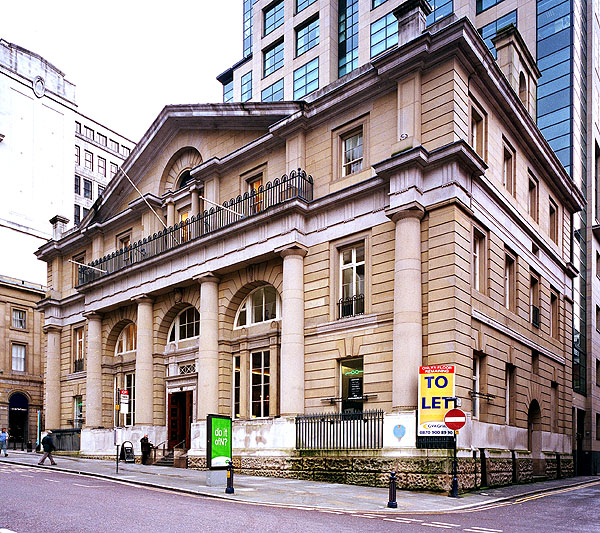
Slide 3: Barry & Pugin Houses of Parliament 1836
The Houses of Parliament, London, England (1835), Sir Charles Barry and AWN Pugin
Slide 4: Pugin Own house, Ramsgate 1841
August Welby Northmore Pugin (1812-52). St Augustines, Ramsgate, Kent with Pugin’s own house, The Grange
Slide 5: Butterfield All Saints, Margaret Street 1849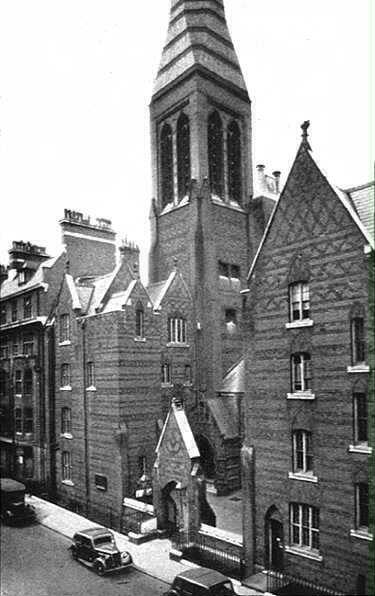
All Saints, Margaret Street, London,1850-59 William Butterfield
Slide 6: Scott Foreign Office 1860
At the end of the 1860s the buildings which faced the front of Number 10 were knocked down, to be replaced by the magnificent new Foreign Office building. George Gilbert Scott’s creation, with its huge open court and elaborate state rooms, dwarfed Number 10. It even had its own Cabinet Room in which the Cabinet sometimes met, rather than at Number 10. A number of Prime Ministers in the middle of the century, including Sir Robert Peel, Earl Derby and Lord Palmerston, lived in their own London town houses rather than Number 10. The tradition of the Prime Minister living at Number 10 was not firmly established until Arthur Balfour became Prime Minister in 1902. 10 Downing Street was modernised towards the end of the nineteenth century. Electric lighting was fitted in 1894 and the first telephones were installed around the same time. There were several plans to build a new Foreign Office on the Downing Street site, but nothing came of them until the 1850s, when it was decided to centralise the major departments of state in Whitehall and to replace the warren of fine houses and tumbledown courts with purpose-built ministries. In 1856 a government competition for plans for new Foreign and War Offices on the Downing Street site was announced, and in 1858 after a protracted argument on the form of the redevelopment (the ‘Battle of the Styles’ between those favouring Gothic or Classical architecture) George Gilbert Scott was appointed as architect. Scott had envisaged a Gothic Foreign Office, but this was not approved by Lord Palmerston, and although a compromise Byzantine solution was offered, it too was rejected as ‘a regular mongrel affair’. Palmerston refused to countenance anything other than a building in the classical style, and Scott finally succumbed and produced drawings for the building we know today. Work began on clearing the site and sinking foundations in 1861-2, obliging the Office to move to temporary accommodation in Whitehall Gardens, and the new Foreign Office eventually opened for business in July 1868.
Slide 7: Scott St Pancras Hotel Barlow Train Shed 1865
London Images
Slide 8: Cruikshank London Going Out of Town 1829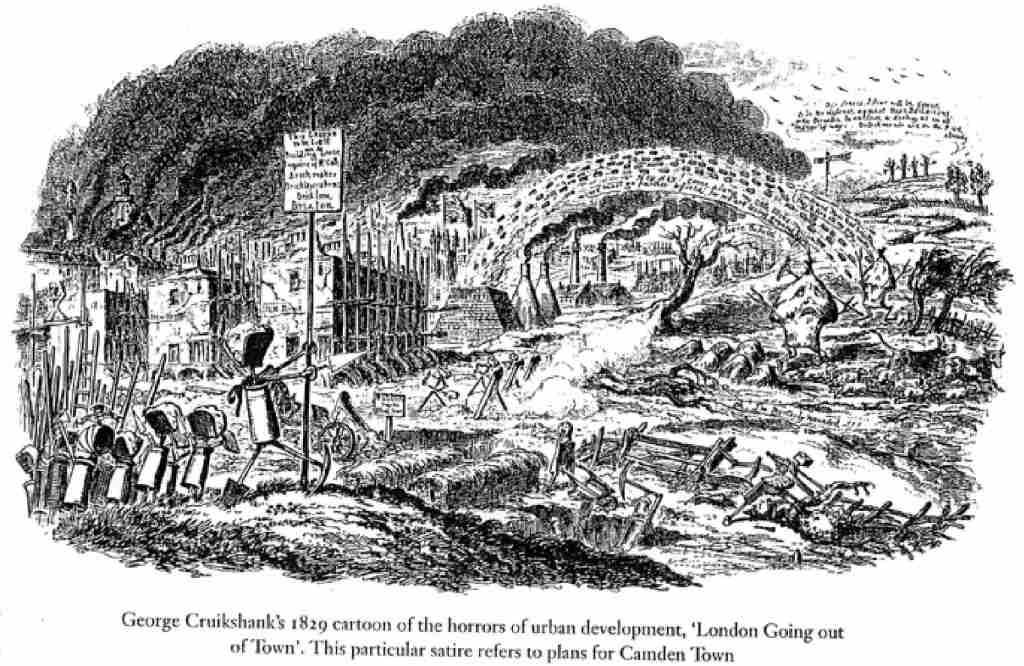
George Cruikshank’s 1829 cartoon of the horrors of urban development, ‘London Going out of Town’. This particular satire refers to plans for Camden Town
Slide 9: Rossetti Found 1853
Slide 10: Emily Mary Osborn Nameless and Friendless 1857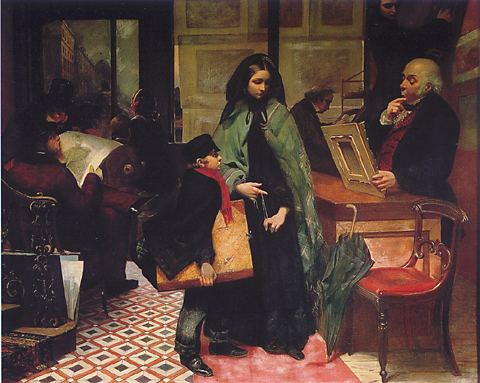
Slide 11: Ford Maddox Brown Work 1852-63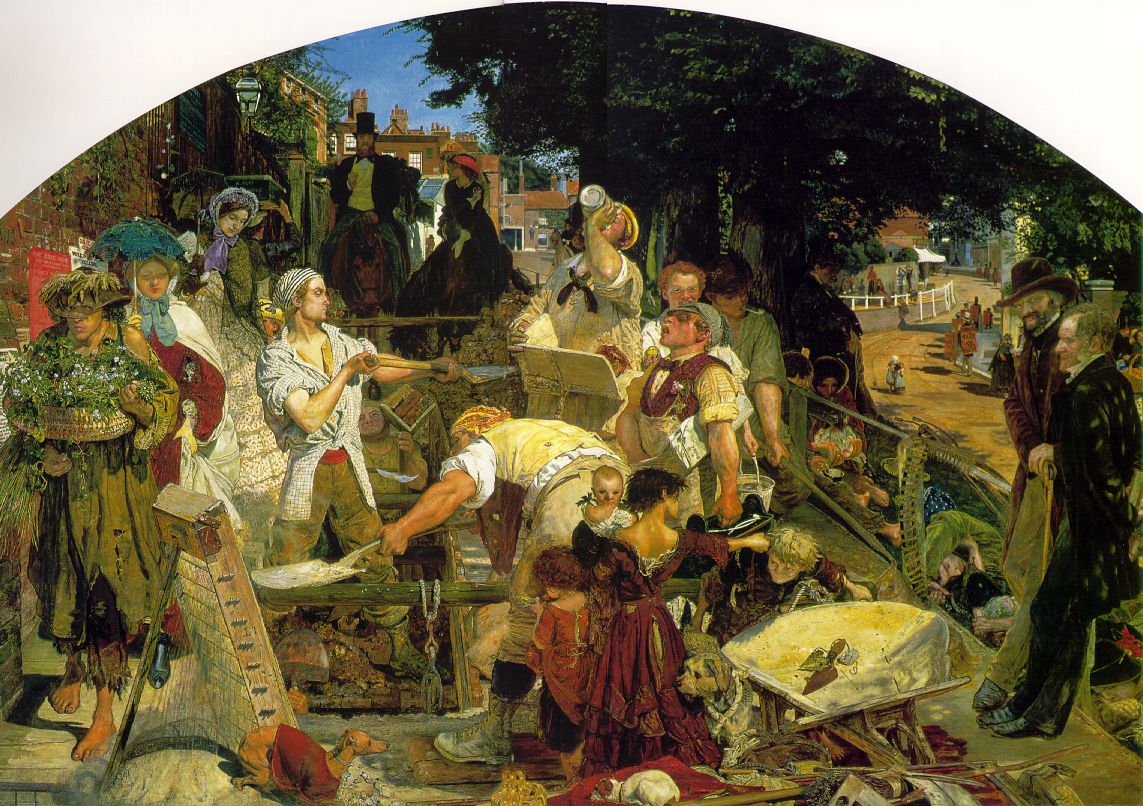
Slide 12: Two O’Clock Regents Street Sala Twice Around the Clock: Or the Hours of the Day & Night in London 1859(image not found)
Slide 13: Frith The Times of the Day 2: Noon — Regents Street 1862(image not found)
Slide 14: Frith Paddington Station 1862,
Slide 15: Egg Travelling Companions 1862
Slide 16: Dore A Couple and Two Children sleeping on a London Bridge Dore & Jerrold London A Pilgrimage 1871
PAUL-GUSTAVE DOR' (1832-83) AND BLANCHARD JERROLD
London: A Pilgrimage (1872)
London Bridge, 1872
Paris Buildings
Slide 17: Baltard Les Halles 1853
Slide 18: Garnier Opera 1857 to 1874
Paris Images
Slide 19: Monet Boulevard des Capucines 1873
Slide 20: Renoir La Loge 1874
Slide 21: Caillebotte Man on a Balcony, Boulevard Haussmann 1875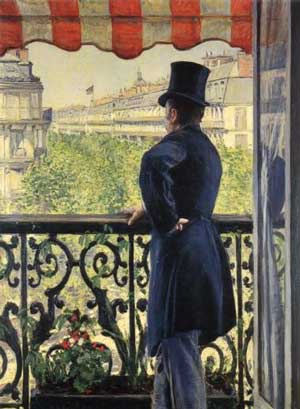
Slide 22: Caillebotte Rainy day Place De L’Europe 1877
Slide 23: Caillebotte Le Pont de l’Europe 1876(image not found)
Slide 24: Degas Women in Front of a Caf' 1877
Slide 25: Monet The Gare St-Lazare 1877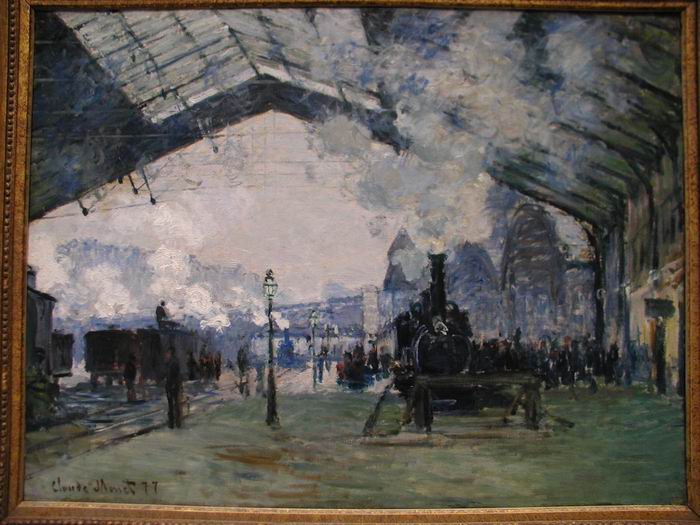
Slide 26: Van Gogh The Outskirts of Paris 1886
Slide 27: Pissarro The Boulevard Montmartre at Night 1897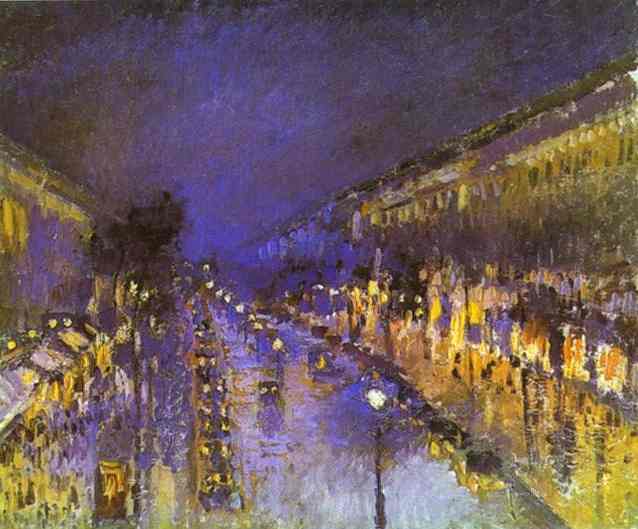
Slide 28: Pissarro Avenue de l’Opera 1898
Slide 29: Manet The Balcony l868-69

